#Pterodactyloids
Explore tagged Tumblr posts
Text
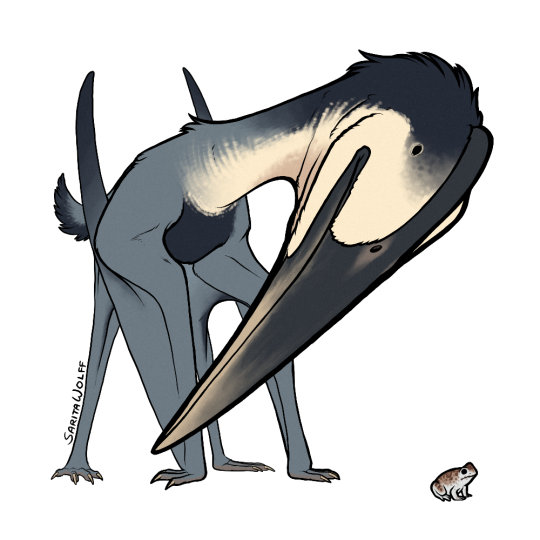
#Archovember Day 8 - Zhejiangopterus linhaiensis
Azhdarchids are known as the largest flying animals of all time, the last great stand of the pterosaurs before . They contained mighty giants like Quetzalcoatlus and Hatzegopteryx, who ruled the skies of the Late Cretaceous. But not all azhdarchids were flying carnivorous giraffes. Some of them were downright tiny, while others reached a more modest, respectable size. Slightly larger than a female Pteranodon, Zhejiangopterus linhaiensis was one such “moderately large” azhdarchid.
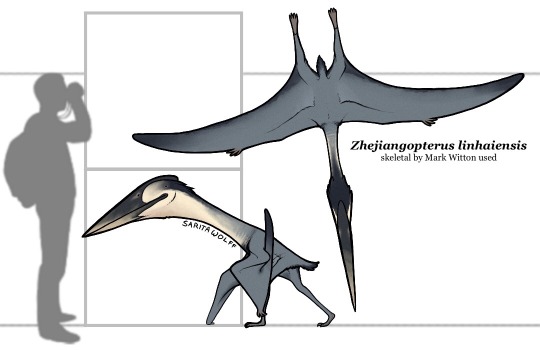
Zhejiangopterus lived in Late Cretaceous China and is so far the most complete azhdarchid known, making it very influential to our understanding of this amazing family of pterosaurs. As several specimens have been uncovered, it was probably fairly common in the Tangshang Formation. It lacked the bony crest seen in many of their relatives, instead opting for a long, straight, graceful profile. Like other azhdarchids, Zhejiangopterus were likely terrestrial stalkers similar to storks and ground hornbills, only using their wings to escape predators or move to new hunting grounds.
Not many other animals have been found in the Tangshang Formation. Alongside Zhejiangopterus, there is only the avialan Yandangornis (whose eggs and chicks and perhaps even adults, if they could catch them, could have been prey for the pterosaur) and an unnamed therizinosauroid. However, living in Late Cretaceous China, it could have also come across the titanosaur Dongyangosaurus further South, and further inland: the ankylosaur Gobisaurus, the pachycephalosaurid Sinocephale, the ornithomimid Sinornithomimus, the carcharodontosaurid Shaochilong, and the mysterious theropod Chilantaisaurus. No doubt there were also plenty of lizards, snakes, mammals, amphibians, and small dinosaurs hiding in the coastal grasses, ready to be nabbed by the dragon of Zhejiang.
#my art#SaritaDrawsPalaeo#Zhejiangopterus#Zhejiangopterus linhaiensis#azhdarchids#pterodactyloids#pterosaurs#archosaurs#archosauromorphs#reptiles#Archovember#Archovember2023
87 notes
·
View notes
Text

Day 16- Nyctosaurus
Prompts
#art#my art#digital art#paleoart#dinovember#paleontology#palaeoblr#archosaurs#pterosaurs#pterodactyloids#nyctosaurids#nyctosaurus#queue
29 notes
·
View notes
Text

Exercise_Anhanguera. Digital, 2023.
—————————————-
Instagram
Pinterest
641 notes
·
View notes
Text




☀Rhamphorhynchus | Existed from 163.5 million years ago to 145 million years ago


Rhamphorhynchus was about 50 cm (20 inches) long, with a long skull and large eyes; the nostrils were set back on the beak. The teeth slanted forward and interlocked and were probably used to eat fish. The body was short, and each thin wing membrane stretched from a long fourth finger.
Rhamphorhynchus lived during the Late Jurassic and resided in Africa and Europe. The first Rhamphorhynchus fossil was discovered in 1846.
Rhamphorhynchus muensteri is from the Late Jurassic limestone beds of Southern Germany and is one of the largest non-pterodactyloid pterosaurs. Like all pterosaurs, Rhamphorhynchus was capable of powered flight, though was potentially unusual in that young juveniles were precocial and flew from a very young age
26 notes
·
View notes
Text
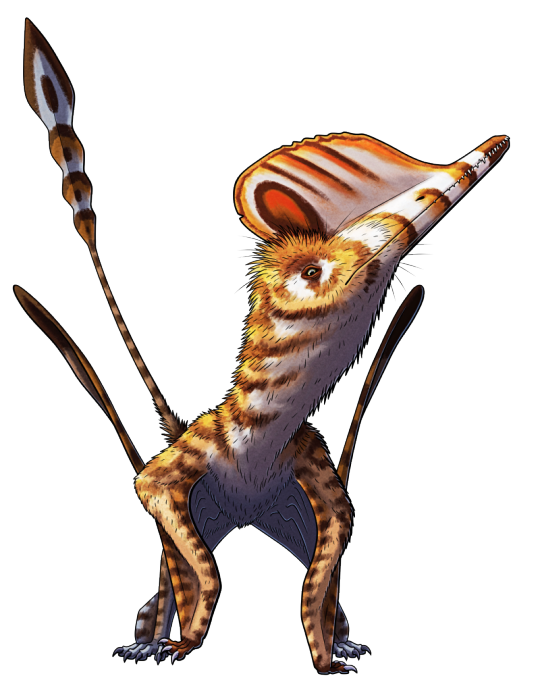

Wukongopterus lii was a pterosaur that lived during the mid-to-late Jurassic, about 164 million years ago, in what is now northeastern China. It was fairly small, with a wingspan of around 70cm (~2'4"), and showed a mixture of anatomical features in-between the long-tailed short-headed 'rhamphorhynchoids' and the short-tailed long-headed pterodactyloids.
Its long jaws were lined with tiny pointed conical teeth, suggesting it was adapted for primarily feeding on insects. It also had a very slight overbite, with the first two pairs of teeth in its upper jaw protruding almost vertically over the end of its lower jaw.
As a fully mature adult it would have had a low bony crest on its head that probably supported a larger keratinous structure – similar to other known wukongopterids – although the exact size and shape is unknown since the one confirmed specimen of Wukongopterus is missing that particular part of its skull. Another fossil nicknamed "Ian" may represent a second individual of this species, showing a different crest arrangement further forward on its snout, so I've made two different versions of today's image to reflect that possibility.
———
NixIllustration.com | Tumblr | Patreon
References:
Cheng, Xin, et al. "New information on the Wukongopteridae (Pterosauria) revealed by a new specimen from the Jurassic of China." PeerJ 4 (2016): e2177. https://doi.org/10.7717/peerj.2177/supp-1
Garland, Nick. “Ian the Wukongopterid.” Pteros, https://www.pteros.com/pterosaurs/ian-the-wukongopterid.html
Wang, Xiaolin, et al. "An unusual long-tailed pterosaur with elongated neck from western Liaoning of China." Anais da Academia Brasileira de Ciências 81 (2009): 793-812. https://doi.org/10.1590/S0001-37652009000400016
Wikipedia contributors. “Wukongopterus.” Wikipedia, 8 Dec. 2023, https://en.wikipedia.org/wiki/Wukongopterus
XuanYu Zhou 周炫宇. Anatomy, Systematics and Paleopathology of Pterosaurs: insights based on new specimens from China. 2023. Hokkaido University, PhD thesis. https://doi.org/10.14943/doctoral.k1560
#science illustration#paleontology#paleoart#palaeoblr#wukongopterus#wukongopteridae#monofenestrata#pterosaur#art
347 notes
·
View notes
Text
Archovember 2024 Day 16 - Caelestiventus hanseni

Hailing from Late Triassic North America, Caelestiventus hanseni turned what we knew about pterosaurs on its head. Before its description in 2015, it was thought that all of the early pterosaurs of the Late Triassic were small coastal animals, feeding on fish and insects by the shore. But Caelestiventus lived in a desert, 65 million years before other known desert-dwelling pterosaurs. Also, up until its discovery, only some pterodactyloid pterosaurs were known to he desert-dwellers, but Caelestiventus was a dimorphodontid. Dimorphodon itself being found in the Early Jurassic, this puts the origins of the dimorphodontid family much further back than originally thought, and in North America. Caelestiventus is also the oldest known pterosaur from North America.

While most Triassic pterosaurs are very small, Caelestiventus was (comparatively) large with a 17.8 cm (7.0 in) long skull and estimated 1.5 meters (4.9 ft) long wingspan. The only known specimen is a subadult, so it’s possible Caelestiventus could have grown larger. It had three different tooth shapes: long fang-like spikes, large "leaf-shaped" blades, and tiny blades, which it may have used to catch and eat lizards and small insects.
Found in the Nugget Sandstone Formation, Caelestiventus would have of course lived in a large desert full of sandy dunes, dotted by seed plants of the extinct, cycad-like order Bennettitales. No other named fossils are known from this area, though theropod tracks have been found, and indeterminate fragments of theropods, sphenosuchians, drepanosaurids, sphenodontians, and lepidosaurs are known.

This art may be used for educational purposes, with credit, but please contact me first for permission before using my art. I would like to know where and how it is being used. If you don’t have something to add that was not already addressed in this caption, please do not repost this art. Thank you!
#Caelestiventus hanseni#Caelestiventus#dimorphodontid#pterosaurs#archosaurs#archosauromorphs#reptiles#Archovember#Archovember2024#Dinovember#Dinovember2024#SaritaDrawsPalaeo#Late Triassic#USA#Nugget Sandstone Formation
31 notes
·
View notes
Text
On pterosaur footprints
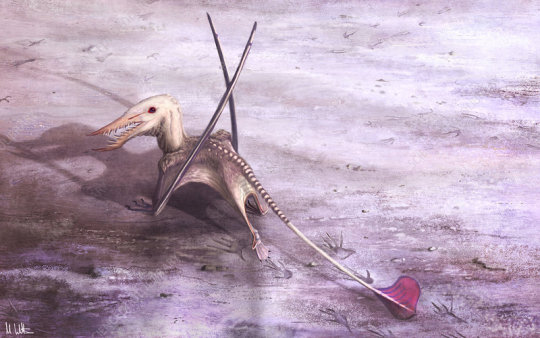
A maker of Rhamphichnus footprints by Mark Witton. Note pronated arms.
There are three main pterosaur ichnotaxa (footprints assigned taxonomically):
Pteraichnus is by far the most common, occuring from the Jurassic to the very end of the Cretaceous, and can be considered a bit of a wastebasket taxon, though it’s well distinguished by lateral three-fingered foreprints and large hindprints.
Haenamichnus are Maastrichtian tracks assigned specifically to azhdarchids. These are very large in size and differ from Pteraichnus by having more compact footprints, with digits barely differentiated.
Rhamphichnus are tracks made by non-pterodactyloid pterosaurs. They differ from the rest in having pronated forelimbs and more square-shaped hindprints with longer toes.
These foot prints offer quite a lot about pterosaur palaeobiology. Haenamichnus validates the notion that azhdarchids had compact feet and were specialised to hunt in terrestrial environments, while Rhamphichnus shows that early pterosaurs could rotate their forelimbs like mammals can. But the ones I find most interesting are the ‘generic’ Pteraichnus. While as mentioned above they might be a bit of a wastebasket, they are typically assumed to be made by ctenochasmatoids or dsungaripteroids (Witton 2013). Since they last until the end of the Cretaceous, this could indicate the presence of these pterosaurs well past the end of their fossils.
This has precedent, as Pteraichnus attributed to dsungaripteroids have been found in Late Cretaceous deposits, tens of millions of years after the closest footprint makers disappear from the fossil reccord. Therefore, they indicate long fossil ghost lineages.
Hopefully, more studies will be conducted on pterosaur footprints.
83 notes
·
View notes
Text
Hello, everyone seeing this

Addition one, autism
What is autism and what is it not?
What it is: a neurological disability that affects nearly every aspect of someone with its life. It can affect different people in different ways.
What it is not: something that makes people inherently stupid or something that limits someone’s worth.
The basics: Autism is characterized by social difficulty, sensory issues, and difficulty with motor skills along with many other things but I believe it can be best simplified to this. It is genetic so if you have a family member diagnosed with it you are more likely to have it.
Fun facts before we go into detail
Pterodactyl is the informal name for a sub group of flying reptiles, the formal name being pterodactyloids (britanica).
The idea that “Frankenstein’s monster” was brought to life using lightning or any form of electricity did not come from the book and is just an idea people decided to go with (me, since I read a bit of the book, I still need to finish it).
Sun burns hurt (ouch).
Back to the subject
Autistic people tend to get overwhelmed easily, have intense long lasting interest, have a hard time understanding social cues, think literally, and do actions to help regulate stimulation (these actions are called stims).
Examples of common behavior in autistic people and some things I did/do related to my autism
Sensory issues and overload: many people, myself included feel great distress from unpleasant stimulation and when having a sensory overload or a meltdown have a hard time speaking (I often lose my ability to speak full words when having overloads or meltdowns). Sound and texture tend to be what people have the most problems with from my experience.
Special interests and hyperfixations: I have been obsessed with mythology for years and think about it nearly constantly, it is a special interest of mine. I once watched possibly in Michigan at least once a day for a week and was constantly singing the songs from it an talking about it for a bit, that was a hyperfixation.
Difficulty with social cues: not understanding why certain things aren’t supposed to be talked about in some situations, accidentally saying something considered inappropriate, saying something that you don’t think is rude then finding out that it was seen as rude and not understanding why, having to look up or ask people what you are supposed to do in a situation.
Thinking literally: thinking that rolling eyes is supposed to be be like actually rolling and not just looking up (I still think this is bs), not being able to tell if someone is being sarcastic or serious, not being able to tell if something is a hyperbole or not.
Stims: hand flapping is a pretty common one with autistic people, using fidget toys, chewing on things, foot tapping, playing music is technically a stim.
Video
youtube
I liked this video and found it pretty relatable
A bit more about autism
Please look into the diagnostic criteria and more experiences of autistic people if you think you might be autistic, but please don’t seek out a diagnosis if you are in America.
How to spot ableism targeted towards autistic people
Jokes calling people special or sped are ableist and most often ment about autism.
Jokes involving “odd” hand movements and noises are mocking height support needs autistic people, which is ableist.
Popular girls acting even slightly odd towards autistic people usually means that the person’s autism is the punchline of their jokes, they will often pretend to be friends with autistic people as a way to mock them.
Forcing people to make eye contact or not fidget is ableist towards autistic people and people with adhd, the idea that someone has to act “normal” to be polite is ableist.
The term “differently abled” is patronizing and ableist, so is anything similar, the idea that disability is something insulting and tragic is ableist.
For most of these the term ableist should really be replaced with disableist but ableist is used more often then disableist and autocorrect doesn’t think disableist is a word so I went with ableist.
Song

#I am not a professional#just an autistic person who has done a lot of research on autism#and knows a lot of autistic people#autism#information#asd#Youtube#Spotify
3 notes
·
View notes
Note
Okay, so, I don't know how much specific interest you may or may not have in pterosaurs, I can't recall seeing you mention them before (but also my memory is... ummm...).
So basically, which gender are you, rhamphorhynchoid or pterodactyloid?
As with any favorite or binary choosing question, especially about gender and extinct life, I can't choose! But if I had to, I would choose rhamphorynchoids. They're honestly cute in a way, and so much more elegant than those dirty, clumsy looking, dopey pterodac- *stabbed*
Agh
Oh god
Oh no
Oh fuck

All glory to Pterodactyloidea.
All glory to Tapejara.
All glory to Hatzegopteryx.
All glory to Quetzalcoatlus.
All glory to Azhdarchoidea.
33 notes
·
View notes
Text

Marvel's Sauron, but his pterosaur mutation evokes an azhdarchid instead of the more conventional pterodactyloid. I don't think Spider-Man is happy any which way.
#sketch#monochrome#fanart#alternate design#meme#pterosaur#azhdarchid#sauron#marvel#marvel fandom#spider man#spiderman#peter parker#karl lykos
10 notes
·
View notes
Photo
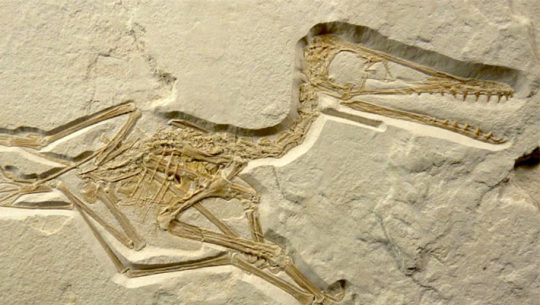
150-million-year-old fossil fills important gap in evolution of pterosaurs
A new genus and species of monofenestratan pterosaur being named Propterodacylus frankerlae documents the transition from the more ancient rhamphorhynchoid pterosaurs to the derived pterodactyloids.
https://www.sci.news/paleontology/propterodacylus-frankerlae-13146.html
#eartharchives#paleomedia#paleontology#fossil#fossils#evolution#evolutionarybiology#naturalhistory#magazine
7 notes
·
View notes
Text

#Archovember Day 28 - Tapejara wellnhoferi
The Tapejarids were Cretaceous pterodactyloids famous for their impressive crests. I’ve drawn a handful of various tapejarids over the years, I figured it was finally time for the type species of the family: Tapejara wellnhoferi.
Smaller than their close relatives, Tupandactylus, Tapejara was still a mid-sized pterosaur. It had a bony semi-circular crest over the snout and a bony prong that extended back behind the head, which could have supported a number of different soft tissue crest shapes. Unlike the Tupandactylus species, Tapejara fossils did not preserve signs of a keratinous crest. Study on Tapejara’s scleral rings have shown that these pterosaurs may have been cathameral (active at irregular periods during both day and night, whenever resources are available). There were a variety of pterosaurs in Early Cretaceous Brazil, filling both land predator and fish-eating niches. Tapejara could have filled a different niche as an omnivore or full herbivore.

Like most of Cretaceous Brazil, the Romualdo Formation was a hotspot for pterosaurs. Tapejara wellnhoferi would have lived alongside many species of Anhanguera as well as other anhanguerids like Maaradactylus, Cearadactylus, and Tropeognathus. There were also ornithocheirids like Araripesaurus and Brasileodactylus, and targaryendraconids like Barbosania. It wasn’t the only pterosaur with an impressive crest either, as it would have also shared the environment with other tapejarids like Thalassodromeus, Kariridraco, and Tupuxuara. While pterosaurs dominated the landscape, there were also dinosaurs here, such as the spinosaurid Irritator, the compsognathid Mirischia, and other indeterminate theropods like Aratasaurus and Santanaraptor. There were even some pseudosuchians here, including an Araripesuchus species, Araripesuchus gomesii.
#my art#SaritaDrawsPalaeo#Tapejara wellnhoferi#Tapejara#tapejarid#pterodactyloids#pterosaurs#archosaurs#archosauromorphs#reptiles#Archovember#archovember2023
15 notes
·
View notes
Text
Monday Musings: What caused the end of the Jurassic Period?

That's a tough question to answer. Scientists has a few hypotheses:
1.) Major Marine Regression
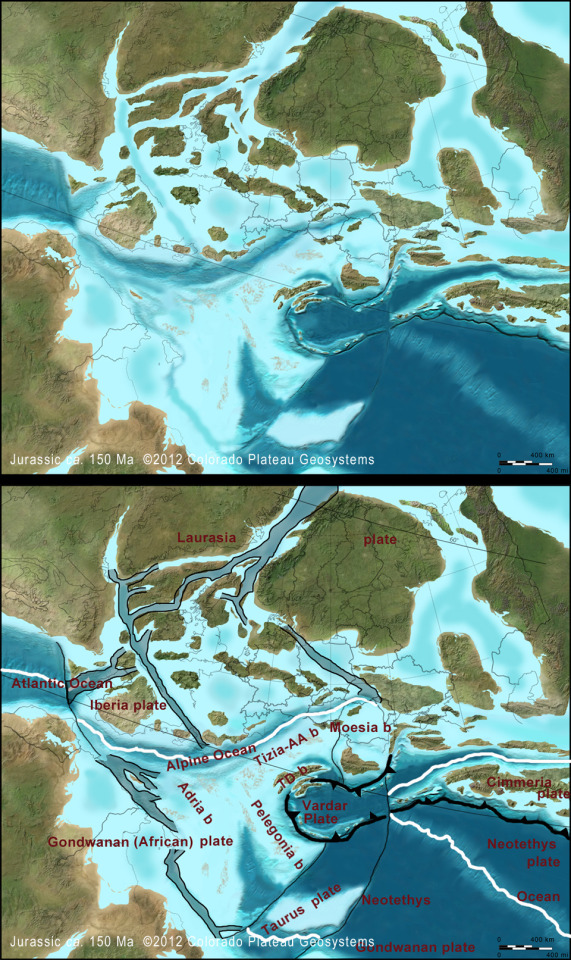

The is evidence in Europe of a major sea level drop which would have caused localized extinctions. I mean, look how low sea level dropped within 25 million years!
2.) Volcanism
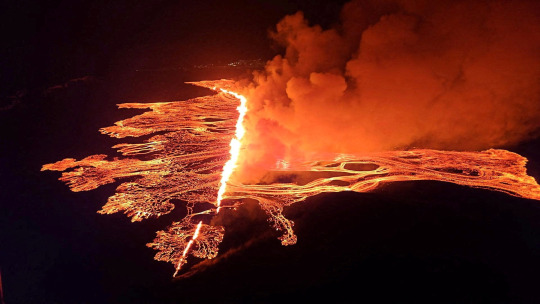
The Tithonian stage of the Late Jurassic saw the creation of a large volcanic plateau in the north Pacific and numerous volcanic deposits where Gondwana was beginning to separate. None of these explain the Laurasian extinctions though.
3.) Asteroid Impact
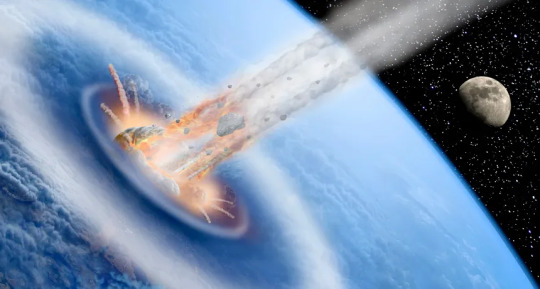
There were three minor asteroid impacts during the Late Jurassic; one in South Africa, one in Australia, and one in Norway. None were large enough to have a global impact.
5.) Sampling Bias

We simply might just be missing part of the picture. In western North America, we are actually missing a chunk of time in our rocks between the end of the Jurassic and the beginning of the Cretaceous. We also see many Jurassic lagerstätten worldwide and a definite lack of such in the early Cretaceous. There also appear to be decreases in sauropod diversity, megalosaurids, and stegosaurids as well as complete extinction of non-pterodactyloid pterosaurs. This could be because they real were going extinct or because they moved to enviorments that don't preserve fossils. We may never know.
6.) There wasn't a mass extinction, just a faunal turnover. This something we can see in the Cedar Mountain Formation. Perhaps there was another one from Jurassic to Cretaceous, we just haven't found it yet.

As of right now, the boundary between the Jurassic and Cretaceous is formally undefined due to the presence of more endemic flora and fauna than cosmopolitan (more species specific to one area than global distribution). What is agreed upon was that the Jurassic ended in a cooling period that continued into the early Cretaceous. Maybe one day we will have more answers but for now it remains a mystery.
19 notes
·
View notes
Photo
Instagram
Pinterest

Exercise_”Fly No More” starring Fictional Pterosaur.
Digital, 2020.
Original sketch: https://esmaniottoart.tumblr.com/post/189375216068/sketchfly-no-more-starring-fictional-pterosaur.
142 notes
·
View notes
Text






Assembly and maintenance of cyberdino chassis, plus a couple of weird outliers: BOTTOM LEFT: Extrasolar marine infiltrator engineered for insertion among panspermic pterodactyloid x mosasaur hybrids.
BOTTOM RIGHT: Partial museum reconstruction of a Flyrannoborg specialized for covert operations on Tyrannoflugel worlds.
Midjourney 6
5 notes
·
View notes
Text









Rhamphorhynchus
(temporal range: 150.8-148.5 mio. years ago)
[text from the Wikipedia article, see also link above]
Rhamphorhynchus (/ˌræmfəˈrɪŋkəs/,[1] from Ancient Greek rhamphos meaning "beak" and rhynchus meaning "snout") is a genus of long-tailed pterosaurs in the Jurassic period. Less specialized than contemporary, short-tailed pterodactyloid pterosaurs such as Pterodactylus, it had a long tail, stiffened with ligaments, which ended in a characteristic soft-tissue tail vane. The mouth of Rhamphorhynchus housed needle-like teeth, which were angled forward, with a curved, sharp, beak-like tip lacking teeth, indicating a diet mainly of fish; indeed, fish and cephalopod remains are frequently found in Rhamphorhynchus abdominal contents, as well as in their coprolites.[2]
Although fragmentary fossil remains possibly belonging to Rhamphorhynchus have been found in England, Tanzania, and Spain, the best preserved specimens come from the Solnhofen limestone of Bavaria, Germany. Many of these fossils preserve not only the bones but impressions of soft tissues, such as wing membranes. Scattered teeth believed to belong to Rhamphorhynchus have been found in Portugal as well.
6 notes
·
View notes